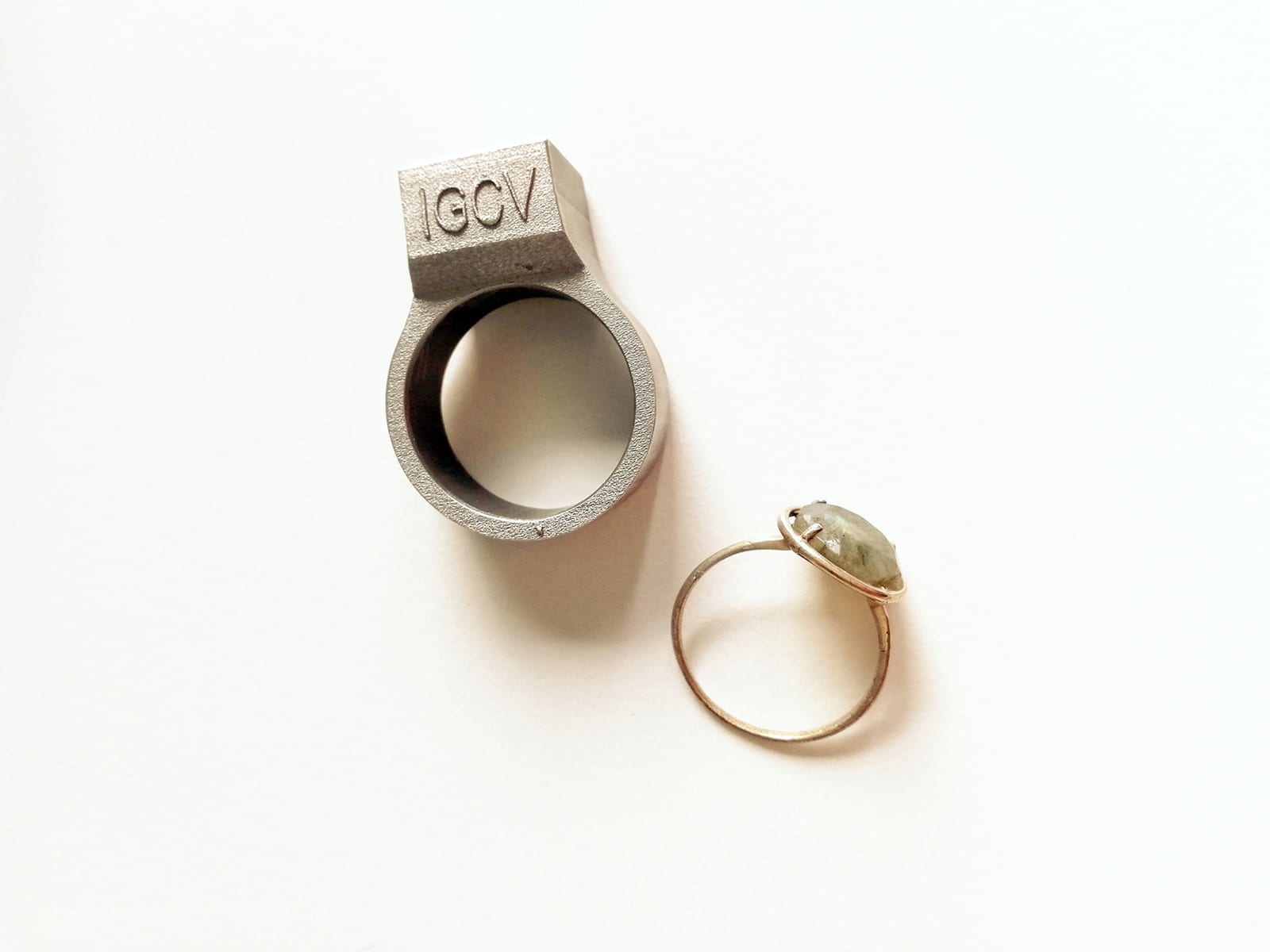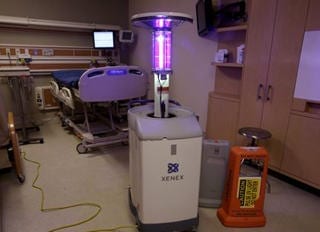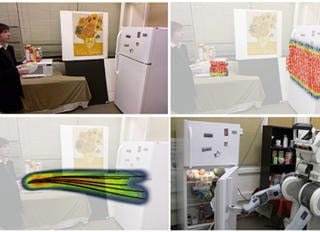
“Smart” paper developed at NDSU
Dr. Val Marinov’s team has developed a method to embed ultra-thin, ultra-small RFID chips on paper or other flexible substrates, which could lead to ways to reduce counterfeiting of a wide variety of items such as pharmaceuticals, currency, legal papers, bearer bonds and other security documents. The patent-pending process, known as Laser Enabled Advanced Packaging, uses a laser beam’s energy to precisely transfer and assemble chips with dimensions well below those possible using conventional methods.
The embedding method involves chips thinner than most commercial RFID chips on the market today. “We use our LEAP technology to embed ultra-thin, ultra-small semiconductor chips, including 350 µm/side, 20 µm thick semiconductor dice, in paper substrates with a thickness of <120 µm,” said Dr. Marinov, associate professor of industrial and manufacturing engineering at NDSU.
RFID-enabled paper could be used to reduce counterfeiting and to improve the tracking of paper documents of all kinds, according to Dr. Marinov. In addition, this method could enable the production of paper-based RFID tags at a cost lower than that of today’s conventional RFID tags and at packaging rates multiple times higher than those attainable with the conventional pick-and-place technology. The research has been featured in RFID Journal, as well as in scientific publications.
Antennaless RFID tags developed at NDSU
As part of the IEEE International Conference on RFID, Bauer-Reich will discuss research at NDSU’s Center for Nanoscale Science and Engineering to develop on-metal RFID tags that use the structure of the tagged object as the antenna. This research has been featured in publications such as RFID Journal, R&D Magazine and Gizmag. Her talk is part of a workshop on Enhancing Near-Metal Performance of RFID.
UHF RFID Antenna for Wireless Sensor Platform
Layne Berge, a graduate student in Electrical and Computer Engineering at NDSU, is presenting a paper titled “A UHF RFID Antenna for a Wireless Sensor Platform with a Near-Isotropic Radiation Pattern,” as part of the IEEE conference.
The paper was co-written with Dr. Michael Reich, senior research engineer at NDSU CNSE. The research focuses on developing spherical sensor platforms that can communicate using RFID protocols, regardless of orientation. This is useful for sensors that cannot be deployed with a guaranteed orientation, such as those dropped from aircraft.
The Latest Bing News on:
Radio frequency identification
- USDA mandates electronic tags for some cattle, bisonon April 26, 2024 at 10:43 am
USDA will start requiring that certain cattle and bison have electronic eartags, if they are to be moved from one state to another.
- As EV Charging Stations Spread, New Payment Terminal Controllers Rise in Priorityon April 26, 2024 at 8:20 am
The new line of controllers, which are part of Microchip Technology’s maxTouch family of touchscreen controllers, encrypt data that flow into the terminal via the touch screen, such as a PIN. In ...
- Shares of Internet of Things Play Impinj Soar on Strong Earnings and Outlookon April 26, 2024 at 12:17 am
Impinj stock skyrocketed Thursday after the chip provider offered robust guidance and better-than-expected earnings. The company manufactures radio-frequency identification, or RFID, chips for ...
- RFID advances could improve poultry supply chain traceabilityon April 25, 2024 at 11:21 am
A new form of radio frequency identification (RFID) could improve the accuracy of the technology, making it easier to provide visibility into the poultry supply chain from farm to fork.
- Radio Frequency Identification (RFID): What It Is, How It Workson April 23, 2024 at 12:29 pm
Radio Frequency Identification (RFID) is a technology that uses radio waves to passively identify a tagged object. It is used in several commercial and industrial applications, from tracking items ...
- What is NFC? How it works and what you can do with iton April 14, 2024 at 2:30 am
Near field communication (or NFC) is a core smartphone and wearable technology. What does it do exactly? Our brief explainer answers that question and more!The Latest Tech News, Delivered to Your Inbo ...
- Radio Frequency Identification Engineeringon April 13, 2024 at 3:34 pm
To save content items to your account, please confirm that you agree to abide by our usage policies. If this is the first time you use this feature, you will be asked to authorise Cambridge Core to ...
- Radio Frequency Identification Engineeringon April 13, 2024 at 3:33 pm
Radio frequency identification (RFID) is an undeniable aspect of modern living, being used from logistics, access control and banking to smart cities, smart transportation and as a key enabler of the ...
- How RAIN RFID Works and Benefits Retailerson March 29, 2024 at 10:52 am
Radio Frequency Identification is a technology that uses radio waves to track and identify objects. RAIN RFID is a specific type of RFID that is becoming increasingly popular in the retail industry.
- Radio-frequency identificationon January 29, 2020 at 4:00 pm
If home automation in the IoT era has taught us anything, it is that no one wants to run wires. Many of us rent, so new cabling is not even an option, even if we wanted to go that route.
The Latest Google Headlines on:
Radio frequency identification
[google_news title=”” keyword=”radio frequency identification” num_posts=”10″ blurb_length=”0″ show_thumb=”left”]
The Latest Bing News on:
Counterfeiting
- Spain busts counterfeit ring behind fake euro coinson April 26, 2024 at 11:48 pm
After years of investigation, Spanish police have arrested 10 individuals allegedly responsible for bringing forged €2 coins into circulation throughout the EU. So how can you tell if that coin in ...
- VerifyMe, Inc. (VRME)on April 26, 2024 at 9:00 am
anti-counterfeiting, and data-rich brand enhancement services, announced today the Company's financial results for its full year and fourth quarter ended December 31, 2023 ("Q4 2023") VerifyMe ...
- South Korean Scientists Develop Innovative Anti-Counterfeiting ‘Smart Labeling’ Technologyon April 25, 2024 at 6:45 pm
SEOUL, Apr. 26 (Korea Bizwire) – A groundbreaking new labeling technology that prevents forgery and counterfeiting by engraving information instead of using adhesive stickers has been developed by a ...
- Martinsville City Council member arrested, faces 22 felony countson April 24, 2024 at 8:00 pm
James Wisco was arrested Thursday morning on charges including theft, counterfeiting, and corrupt business practice.
- Koenig & Bauer Plans Development Partnership with GSSCon April 24, 2024 at 10:19 am
Koenig & Bauer and Graphic Security Systems Corporation (GSSC) intend to jointly develop and deliver advanced anti-counterfeiting solutions.
- Is Your Intellectual Property Under Attack?on April 23, 2024 at 9:16 am
While cybercrime grabs most of the headlines lately, counterfeiting and other forms of IP infringement continue to strike manufacturers.
- Police serve warrants for counterfeiting and find drugson April 23, 2024 at 5:30 am
WASHINGTON – Washington Police arrested a Washington couple Sunday on felony counterfeiting warrants and then found drugs in their home when making the arrest.
- Counterfeiting platform PandaBuy partially shut down by police raidon April 19, 2024 at 9:05 am
PandaBuy, notorious for selling counterfeit products, is in dire straits after a recent lawsuit led to a police investigation.
- Counterfeiting and AI in the Fashion Industryon April 18, 2024 at 11:42 am
Actions that brands must take to prevent and address counterfeiting effectively include implementing robust proactive measures, such as securing the necessary intellectual property rights and ...
- Illegal Chinese immigrant pleads guilty in gift card scam Wednesday in Coshocton courton April 18, 2024 at 10:28 am
Ming Xue pled guilty to 299 counterfeiting charges and one charge of engaging in a pattern of corrupt activity.
The Latest Google Headlines on:
Counterfeiting
[google_news title=”” keyword=”counterfeiting” num_posts=”10″ blurb_length=”0″ show_thumb=”left”]










